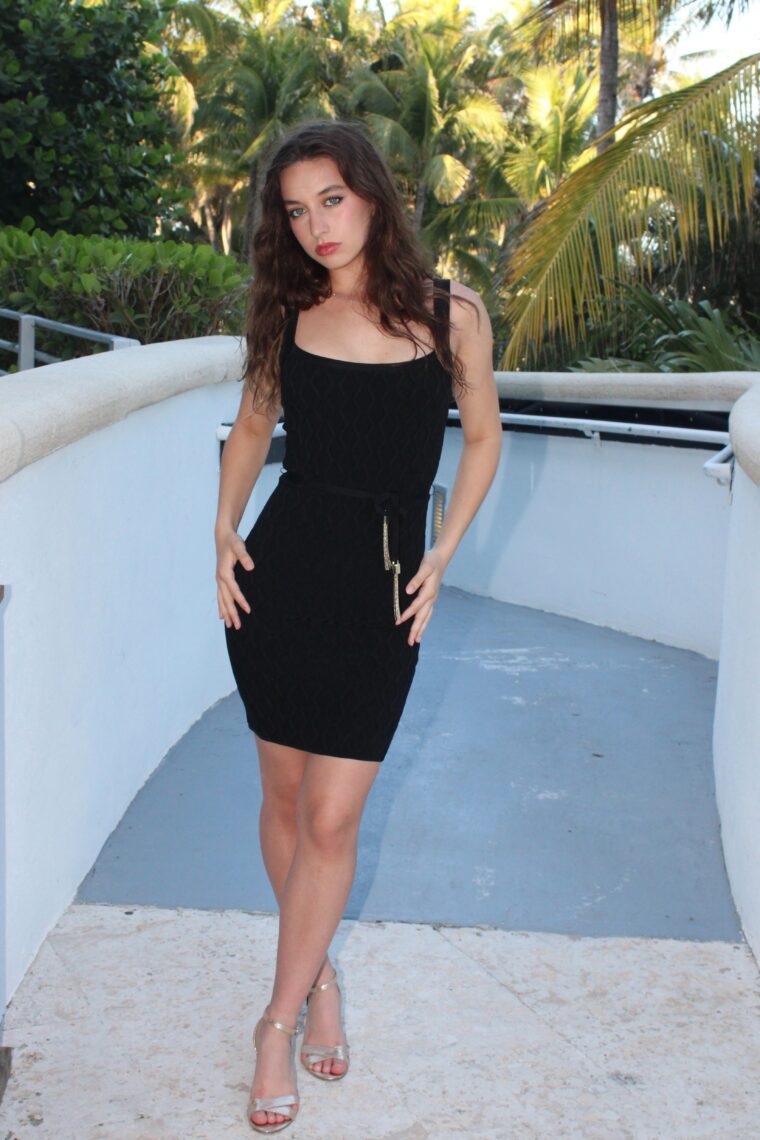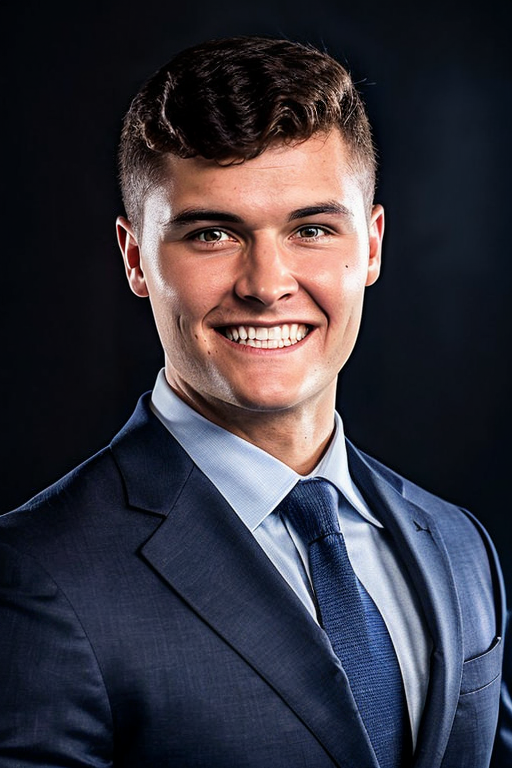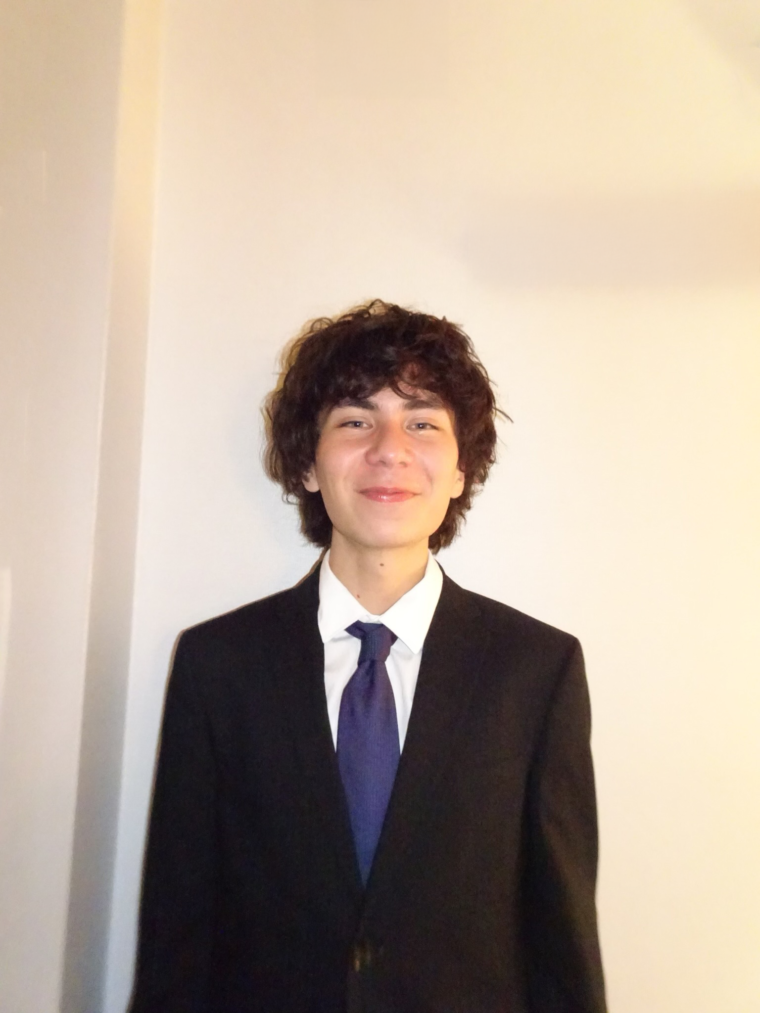Scene
Behind the Screens: WashU’s student influencers share their stories
Many colleges today have students who are social media influencers that are creating and participating in online culture, trends, and consumer behavior. WashU is no exception. Student Life editors Zach Trabitz, Aliza Lubitz, Lily Taylor, and Sara Gelrud spoke with three students who are current or former influencers to learn more about their experiences creating and sharing content with thousands of viewers online.

Photo courtesy of Caroline Byron
Caroline Byron: social media highs, lows, and moving forward
Caroline Byron, a graduating junior who plans to attend WashU School of Law in the fall, has gained social media fame in the past five years, amassing 993,000 followers across her social media accounts. Despite her online presence, Byron noted that she has worked to distance herself from the influencer world in recent years.
Byron started posting content on social media during the COVID pandemic. Her content includes photos of herself, travel snapshots, golfing videos, and pictures with friends. A few of Byron’s Instagram photos gained significant attention in 2020, and an edited post of her went viral. The growing engagement with her content led her to post more frequently, and she quickly gained an increasing number of followers — at one point, her following was growing by 10,000-20,000 people per day.
For a while, Byron said she enjoyed the online attention, and felt like she was building a community on social media.
“It’s fun to get paid to post pictures of yourself,” Byron said. “It can be damaging to have a lot of followers, but it’s also kind of cool. It’s kind of like you have a little community that supports you despite any sort of, like, negativity that still comes in. It’s cool to have a following that knows who you are.”
Despite her success on social media, Byron said she no longer considers herself to be an influencer. Her perspective on influencing shifted after spending the summer before college in Los Angeles, where she explored collaboration opportunities within the industry and met many famous influencers.
“It just wasn’t fulfilling for me,” Byron said. “I saw how a lot of influencers actually lived, because that was when influencer culture really started. Everyone was going to LA and I just wanted to go to college and get a degree and be taken more seriously in my profession.”
Byron also said she didn’t always connect or mesh well with the people she met in LA.
“I think it’s just the overall personality of the influencer world I was exposed to,” she said. “I can’t speak for everyone — there are so many [influencers] I haven’t met, especially the newer ones — but some of the ones I met, I felt like our values didn’t really align.”
Beyond the influencer community, Byron said that posting on social media created pressures that took a toll on her mental health.
“You’re putting yourself out there to be judged,” she said. “At first, I got a lot of hate comments. I don’t think I was one of the more-liked influencers starting out. In high school, I didn’t really know how to take it all at once.”
Byron said her transition to WashU was difficult because of her popularity on social media. Although she said she rarely shared her social media with others unless directly asked, peers sometimes recognized her or eventually saw her profile, eliciting mixed reactions.
“I think that a lot of people at WashU that I talked to freshman year were confused and skeptical of my following,” Byron said. “And I had never really experienced that before, but I think that’s probably typical of going to a new place, a new community of people from a lot of different backgrounds and a lot of different opinions…but it was a little bit challenging to navigate that freshman year. I think it’s definitely calmed down now though, I don’t think anyone really knows or cares at this point.”
Byron ultimately decided to step away from social media to focus on school, but she hasn’t stopped posting entirely. Now, she approaches social media with a different mindset.
“I just post what I want for fun,” Byron said. “I don’t have any pressure around it anymore. I used to be…stressed out and make sure my posts were perfect. I would delete them if they didn’t get a certain amount of views. But now, I just post what’s fun and what I like, and I don’t have any sort of expectation. I think that’s how [people] should use social media.”
One reason Byron said she hasn’t completely deleted her accounts is her admiration for Paris Hilton.
“I like Paris Hilton, and she actually ended up following me after I told her how much I loved her,” Byron said. “She’s one of my mutuals, and I don’t want to delete my account because I want to keep my DMs, and that follow from her.”

Photo courtesy of Anthony Gross
Anthony Gross: personal growth and believing foolishly
Anthony Gross, a campus micro-celebrity who has gained recognition as a de facto WashU student influencer, is known by many on campus, both students and professors alike. Going out on the weekends, he is frequently approached by his followers and peers. In class, he was once asked by his professor if he was the guy from those YouTube videos who always had his shirt off.
Gross started his Instagram account –– which now has 38,200 followers –– in Oct. 2023 with the goal of getting in shape and sharing his journey with others like him.
“I was eating very well, I was working very hard in the gym, and I had this good physique. I’m like, ‘I should let the world know about it somehow,’ because it was all trial and error,” he said.
It took him six months to gain traction over his content that was focused on self-improvement and fitness. His determination to keep posting, however, finally led to a breakthrough post that gained over 12,000 views. Shortly after, he started on TikTok, slowly growing his online presence to include a YouTube channel and Spotify podcast.
“I told myself, ‘if I don’t stick through with this goal to build a personal brand, I’m going to be a quitter for the rest of my life’…I put my head down. I kept going, a lot of trial and error, pivoting. And then finally, I think it was Apr. 16 [of last year], I got my big break.”
Although he has let go of various projects in the past, this one felt different: he genuinely wants to help others his age reach the goals he has been shooting towards, whether it be to have a healthier school-life balance or build a better physique.
“I just really want to make content that would help serve my past self, like the shy, insecure, unconfident kid that doesn’t have belief in himself.” On his podcast, his message is similar. “I talk about stuff that I’ve struggled with in the past, how I’ve dealt with it, and how I’m bettering myself from it,” he said.
Gross spends close to three hours a day shooting and editing the content that he posts to his four different social media accounts and channels. He has over 415 different Instagram reels, YouTube videos, TikToks, and podcasts combined. For someone who posts so much content, creating the ideas behind each post starts with letting his mind wander.
“I’ll sit in my bed with a notepad, close my eyes, and just have ideas come to me. And I’ve learned, like, that’s one of the most fun parts of the process.”
Gross, like any other influencer, sometimes receives hate comments and DMs. But he says that when one follower comments that his advice is helpful, every hateful message becomes easy to ignore.
“One positive comment like that wipes away 10,000 hate comments, and it’s the best feeling in the world that there are people out there that are truly benefiting from your struggles, experiences, content, and advice,” he said.
Gross also stressed the importance of having a supportive community when undertaking projects with long-term goals, especially when it has to do with social media and building a personal brand.
“When you try to do unique things that maybe are a little bit against the norm, you get a lot of pushback…But when you have people in your corner that are supporting you no matter what. Oh my God, it makes the process so much better and kind of just keeps you going.”
He is the first in his family to become an influencer, something his parents are apprehensive about, yet support nonetheless.
“We don’t know anybody that does this type of stuff, so you always get to push back. My mom’s like, ‘you’re gonna work at a corporate job, like you can’t be posting these videos’…but they’re ultimately very supportive of it.”
After speaking with Gross, it would make sense to anyone that one of his favorite books is Napoleon Hill’s “Think and Grow Rich,” a personal development book.
“I understood the statement [from the book] that it’s impossible to fail anything if you never truly give up. And I just kept telling myself that every single day, I told myself that no matter what, like I was so foolish and naive that this could work.”

Photo courtesy of José Villicaña-Brugada
José Villicaña-Brugada: building your own space
José Villicaña-Brugada, a first-year at WashU, has amassed around 50,000 followers between his Instagram and TikTok accounts which center around male fashion, fit-checks, and fashion advice.
Villicaña-Brugada, who studies marketing, said his accounts took off at an opportune moment in February of 2024. He described how male fashion became a more serious online trend around the same time as when he began to make content more frequently.
“I’ve been doing social media since middle school,” Villicaña-Brugada said. “[I] gained traction because I think I took advantage of the trend at the time, which was men caring more about how they dressed. It just so happened that it was perfectly timed with when I was posting the most.”
Villicaña-Brugada said he initially started making videos of himself skateboarding or dancing before transitioning to fashion content. As his online presence grew, he found that one of the best things about building a following around a genuine passion is the community that comes with it.
“You [get] a lot more exposure doing something genuine, and with that also comes getting to work with cool brands and making a lot more connections with other influencers,” Villicaña-Brugada said. “[You] kind of get to cultivate a community of people that are just into the same thing as you.”
Villicaña-Brugada explained that when he first started, he had to actively reach out to brands for collaboration opportunities through Instagram DMs or emails. Initially, brands determined the rates, which were typically low, and some only offered free clothing instead of payment. However, as his following grew, Villicaña-Brugada gained more control over pricing as brands began approaching him, allowing him to set his own terms rather than simply accepting what was offered.
Villicaña-Brugada said the biggest challenge for him, especially online, was that there was an initial stigma towards men who care about how they dress or made curated content for fashion.
“The male fashion trend was something kind of new,” Villicaña-Brugada said. “With that came a lot of criticism towards any kind of creator in that space. But I think the more people did it, the less people really cared. And I think Instagram as a whole adapted to that kind of content.”
Villicaña-Brugada said that criticism in fashion can be hurtful because it often targets a person’s self-expression. He recalled a particular instance in which he received criticism for wearing wide leg pants.
“I guess since [wide leg pants] were so non-conventional, even leading up until just about a year ago, it was very easy for people of any age, whether younger audiences or older audiences, to not [be] accepting and criticize, saying, ‘Oh, your pants are too big’, or that ‘jacket looks dumb’. But in the end, it’s all something that I think is personal, and every person individually has their own opinion,” Villicaña-Brugada said.
However, one turning point for Villicaña-Brugada was when he decided to transition from homemade content to a more professional mode of content creation.
“I think it’s very possible to forever stay on the iPhone and just edit with…TikTok or CapCut,” Villicaña-Brugada said. “But I think it becomes more so [a] personal preference the more you develop. As your account grows, you’re also growing as a person, and personal taste develops heavily too. You have more of a budget, [and] when you have a bigger budget, you just want to create better and better content.”
When asked where he saw himself five years from now, Villicaña-Brugada said there were multiple paths he could see himself taking.
“I’m still pretty open to my general life trajectory,” Villicaña-Brugada said. “It would be cool to be able to combine [my passions] into a full-fledged career doing marketing for a big fashion brand or luxury brand. But, I’d say I’m still pretty open. I definitely want to do marketing in the fashion or tech space more than anything else, whether that be with social media specifically or [something] more general.”
Correction: Editor’s note: This article was updated on April 15 to reflect that Caroline Byron has 993,000 followers across her social media accounts.
